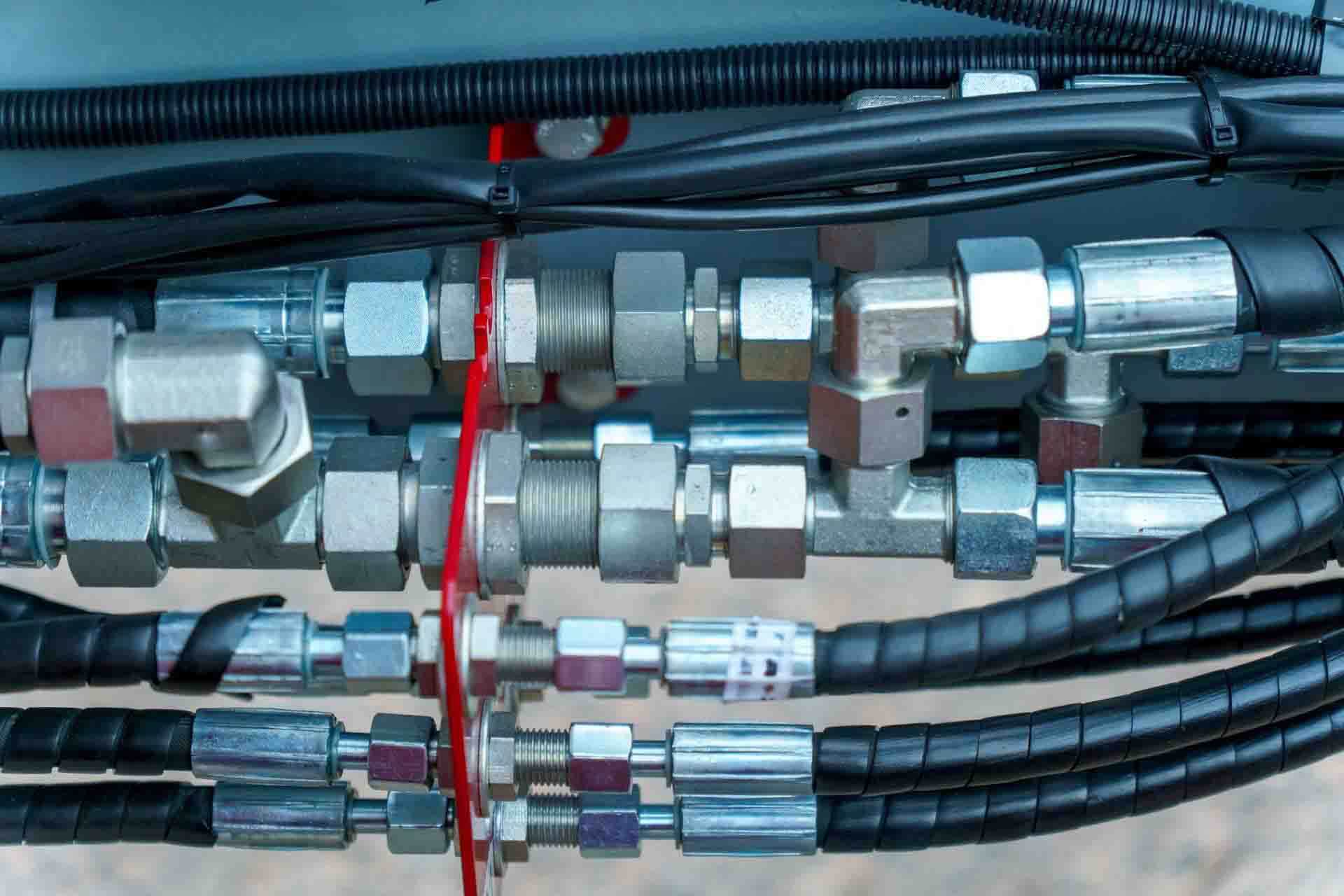
Dozens of industries, and thousands of businesses worldwide, employ pneumatic systems in their manufacturing processes. These systems can perform repetitive tasks with incredible speed and power using pressurized air to generate mechanical strength. However, for any pneumatic system to operate effectively, the compressed air must be able to flow freely through a complex network of pneumatic tubing that is properly sealed to prevent pressure loss due to leaking.
Frequently, pneumatic systems that are otherwise well-constructed are compromised at connection points. The wrong connectors can lead to leaks, poor airflow, or damage to the system. They can even create safety hazards. Choosing the right fittings for particular pneumatic tubing, however, will ensure safe, efficient airflow through the machinery, impacting how smoothly the equipment runs and, ultimately, affecting your business.
While it’s typically best to consult with experts to choose the best pneumatic fittings for your use, here’s what you need to know to get started:
Pneumatic Fittings: The Basics
The function of a pneumatic fitting is to connect pneumatic tubing to the larger system and its component parts. For the system to operate at maximum capacity, it’s important that a proper seal is created between the fittings and the pipes or tubing they are to be connected to. Even the smallest air leak can cause the machinery to fail to function effectively.
It’s also crucial that the fittings allow air to flow through the tubes freely, as any obstructions can compromise the pneumatic system’s ability to perform its job.
Choose the Right Fitting for Your Application
While proper airflow is the primary purpose of any given fitting, there are other factors that must be considered when selecting what will work best for your system. Different fittings are best suited to different applications, and care must be taken to ensure the correct one is being used. For instance, you must consider the environment in which the fittings will be used and whether the pneumatic tubing will need to be disconnected and reconnected regularly.
Before selecting a pneumatic fitting for your machinery, you’ll need to know several things: First, what type of pressures will your system be subjected to? Knowing the expected PSI is critical for selecting the correct fitting. Most manufacturers print a pressure rating directly on the fitting’s label. This will outline both the working pressure and the maximum allowable pressure. The fitting should be kept well within the allowable pressure to operate effectively and safely.
Material compatibility also matters. There are many different types of pneumatic tubing, ranging from rubber to copper to polyvinyl chloride. Different fitting types are better suited to different materials. Typically, heavier-duty tubing will require heavier-duty fittings.
Types of Fittings
There are several types of connectors to choose from, and each has its own unique advantages that can make it better suited for a particular function. For instance, some are designed for convenience, while others may be sturdier. The most important step in choosing the right fitting is knowing what’s available and if it will be appropriate for your particular needs.
Push-to-Connect Fittings
Push-to-connect fittings are among the best options when speed of installation and removal is a factor, as they can snap into place without the need for any tools or other complex installation procedures. This makes them perfect for handheld pneumatic tools and other equipment that requires quick attachment and detachment.
These types of fittings have a built-in O-ring and collet that grips onto the tubing, ensuring a secure fit. They are excellent for low- and medium-pressure tasks, but the seal created may not be ideal for high-pressure systems. Push-to-connect fittings are also somewhat bulky, meaning they are not well-suited for placing in corners or enclosed spaces.
It’s important the tubing used with these types of connectors is somewhat strong and heavy-duty. Thinner pneumatic tubing may be damaged by the internal gripping collets.
Compression Fittings
Compression fittings are another easy-to-install connector for pneumatic tubing. They require only an adjustable wrench to attach them to a hose or tube. The fitting features a metal ring called a ferrule, which clamps into the tubing when an included nut is tightened. This creates an airtight seal and takes up less space than a push-to-connect fitting. It is also able to withstand potentially higher pressures.
Compression fittings are well-suited to more extreme environments, including high heat or machinery that may rattle or vibrate. They are extremely versatile and usable for multiple different types of tubing with equal efficacy. However, they lack the reusability of push-to-connect fittings. This is because the ferrule may also damage the tubing element when it is tightened, meaning it cannot be installed and reinstalled continuously like the push-to-connect option.
Threaded Fittings
For pneumatic systems that will be subjected to the most extreme conditions—including environmental stressors and heavier workloads—threaded fittings are ideal. Threaded fittings usually do not contain O-rings or other elements that may be damaged by heat or repetitive stresses, allowing them to be used in situations where other connectors will not function effectively.
Consisting of a male end and a female end, one of which is attached to the tubing and one of which is attached to the machinery, threaded fittings can be used to create a tighter seal than either compression or push-to-connect connectors. They can also be used for connections that will need to change directions or be used in other irregular settings.
Note that they are not as easy to install. Unlike push-to-connect fittings and compression fittings, attaching threaded fittings usually requires soldering or other advanced tools.
Ensuring You Have the Best Fittings for the Job
The above information will help you to select the best fittings for your particular purposes. However, to ensure your pneumatic system is built to operate efficiently, effectively, and safely for the long haul, it’s best to invest in a fully customized system constructed by a company that specializes in them. Contact Aberdeen Dynamics to discuss your particular requirements, and let us construct a system that will be perfectly suited to your needs.